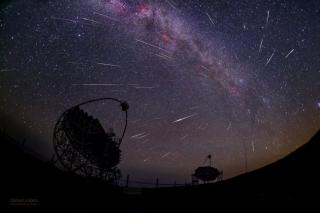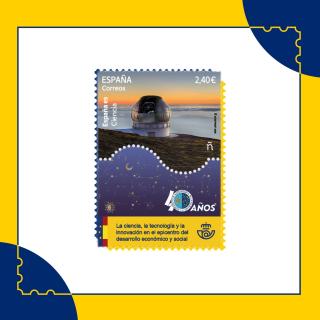The Instituto de Astrofísica de Canarias (IAC) and the National Meteorological Agency (AEMET) have stengthened their commitment to collaborate by adpoting measures which allow them to share installations, services, and data from their observatories. The agreement also contains clauses oriented to the ecological transition, energy use optimizaiton, the reduction of light pollution and assurance of the environmental quality of Izaña.
The Instituto de Astrofísica de Canarias (IAC) and the National Meteorological Agency (AEMET) which depends on the Ministry for Ecological Transition and Demographic Challenge (MITECO) have signed a collaboration agreement published today in the Boletin Oficial del Estado (BOE). After the virtual meeting, which took place on February 22nd between Miguel Ángel López, the president of the AEMET and Rafael Rebiolo, the director of the IAC, the agreement was signed for both institutions.
The agreement, designed to facilitate the operation and the normal work in the Teide, Roque de los Muchachos, and Izaña Atmospheric Observatories defines measures which will regulate the sharing of installations, services and data between the two instituttions.
Specifically, the AEMET commits to providing real time data from its meteorological stations at the Observatory of Izaña and the Roque de los Muchachos Observatory, as well as radiosonde data from its Güímar station, obseravations and predictions of atmospheric parameters relevant to astronomical observation, and specific meteorological predictions to optimize the operation of the telescopes.
The IAC will provide access for the AEMET to the academic and research network RedIRIS, and also data which can be used in meteorological prediction, vigilance, and observation, and wll give support in the installation of instruments for atmospheric observations in the various infrastructures of the two observatories.
Energy transition and climate emergency
This agreement also takes up the global challenges which both institutions will need to face, such as the climate emergency and the energy transition, and includes actions designed to yield optimization of energy use in the processes of operation and maintenance of the infrastructures, as well as a suitable ecological transition. Fitting in with these activities measures to be taken include the minimization of atmospheric, radio, and light pollution as laido ut in the Law of the Sky for protection of the astronomical quality of the observatories.
Finally the two institutions commit to ensuring the environmental qualit of the privileged surroundings which they share and in which they operate which include the Izaña mountain, which shares its boundary with the Teide National Park and with the Forest Crown Natural Park.







